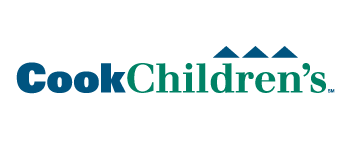Bevacizumab Eliminates the Angiogenic Threat for Retinopathy of Prematurity
| Status: | Active, not recruiting |
|---|---|
| Conditions: | Ocular, Ocular, Women's Studies |
| Therapuetic Areas: | Ophthalmology, Reproductive |
| Healthy: | No |
| Age Range: | Any |
| Updated: | 4/21/2016 |
| Start Date: | March 2008 |
| End Date: | August 2020 |
Intravitreal Bevacizumab (AvastinTM) Injections Versus Conventional Laser Surgery for Vision-threatening Retinopathy of Prematurity: a Prospective, Randomized, Non-blinded, Controlled, Multi-center, Clinical Trial
The purpose of this study was to determine the efficacy and additional advantages of
intravitreal bevacizumab in the treatment of ROP for both Zone I and Zone II Posterior.
intravitreal bevacizumab in the treatment of ROP for both Zone I and Zone II Posterior.
This phase 2 study assessed the anti-neovascularization activity of intravitreal
bevacizumab, as determined by regression of neovascular vessels of retinopathy of
prematurity (ROP), in neonates with acute stage 3 ROP in zone I or posterior zone II with
plus disease. This study enrolled 150 confirmed cases of vision threatening ROP which have
definite plus disease [ranging from Early Treatment for Retinopathy of Prematurity, to
Cryotherapy for Retinopathy of Prematurity . This was done because of the controversy
regarding determining plus disease and the increasing concern that many infants are being
treated whose ROP would spontaneously regress. Bevacizumab will be administered
intravitreally using 0.625 mg (0.025 ml) injections into each eye. There was no intent to
give additional doses unless there was a recurrence of vision threatening stage 3 ROP with
plus disease since the disease is self limited by completion of vascularization. Clinical
response and any evidence of ocular toxicities were documented by retinal imaging system
(manufactured by Clarity Medical Systems, Inc.) taken pre-injection, one week and one month
post injection, and at 6 months of age (54 weeks postmenstrual age)(window of 50 to 70 weeks
PMA)(primary outcome) and at 12 months of age (80 weeks postmenstrual age)(window of 75 to
100 weeks PMA)(structural documentation). Using the same retinal imaging system, fluorescein
angiograms have been taken when possible to document structural outcomes in greater detail.
No evidence of systemic toxicities were documented by appropriate clinical and laboratory
tests.
bevacizumab, as determined by regression of neovascular vessels of retinopathy of
prematurity (ROP), in neonates with acute stage 3 ROP in zone I or posterior zone II with
plus disease. This study enrolled 150 confirmed cases of vision threatening ROP which have
definite plus disease [ranging from Early Treatment for Retinopathy of Prematurity, to
Cryotherapy for Retinopathy of Prematurity . This was done because of the controversy
regarding determining plus disease and the increasing concern that many infants are being
treated whose ROP would spontaneously regress. Bevacizumab will be administered
intravitreally using 0.625 mg (0.025 ml) injections into each eye. There was no intent to
give additional doses unless there was a recurrence of vision threatening stage 3 ROP with
plus disease since the disease is self limited by completion of vascularization. Clinical
response and any evidence of ocular toxicities were documented by retinal imaging system
(manufactured by Clarity Medical Systems, Inc.) taken pre-injection, one week and one month
post injection, and at 6 months of age (54 weeks postmenstrual age)(window of 50 to 70 weeks
PMA)(primary outcome) and at 12 months of age (80 weeks postmenstrual age)(window of 75 to
100 weeks PMA)(structural documentation). Using the same retinal imaging system, fluorescein
angiograms have been taken when possible to document structural outcomes in greater detail.
No evidence of systemic toxicities were documented by appropriate clinical and laboratory
tests.
Inclusion Criteria:
1. Infants who have been screened by the American Academy of Ophthalmology, the American
Academy of Pediatrics, and the American Association for Pediatric Ophthalmology and
Strabismus guidelines (≤1500 grams at birth and ≤30 weeks gestation) who develop
Stage 3 ROP in zone I or posterior zone II.
2. Informed Consent from a parent or guardian.
Exclusion Criteria:
1. Infants who have a congenital systemic anomaly or have a congenital ocular
abnormality.
2. Infants who cannot be treated by conventional laser therapy because of problems with
media clarity. Generally, blind external cryotherapy would be utilized as an initial
therapy and the infant would be excluded from the study even if the media clear
subsequently.
3. Informed Consent from a parent or guardian refused. This will mean that an infant
automatically will receive laser therapy. Bevacizumab (Avastin®) treatment cannot be
given outside of the Protocol. No data will be used from an infant without Informed
Consent.
We found this trial at
15
sites
Cook Children's Medical Center Cook Children's Health Care System is a not-for-profit, nationally recognized pediatric...
Click here to add this to my saved trials
Driscoll Children's Hospital Driscoll Children's Hospital was built because Clara Driscoll's will requested that a...
Click here to add this to my saved trials
Baylor University Medical Center Baylor University Medical Center in Dallas, TX is ranked nationally in...
Click here to add this to my saved trials
Click here to add this to my saved trials
Click here to add this to my saved trials
Click here to add this to my saved trials
Click here to add this to my saved trials
Click here to add this to my saved trials
Click here to add this to my saved trials
Click here to add this to my saved trials
Click here to add this to my saved trials
Click here to add this to my saved trials
Click here to add this to my saved trials
Click here to add this to my saved trials
Click here to add this to my saved trials


